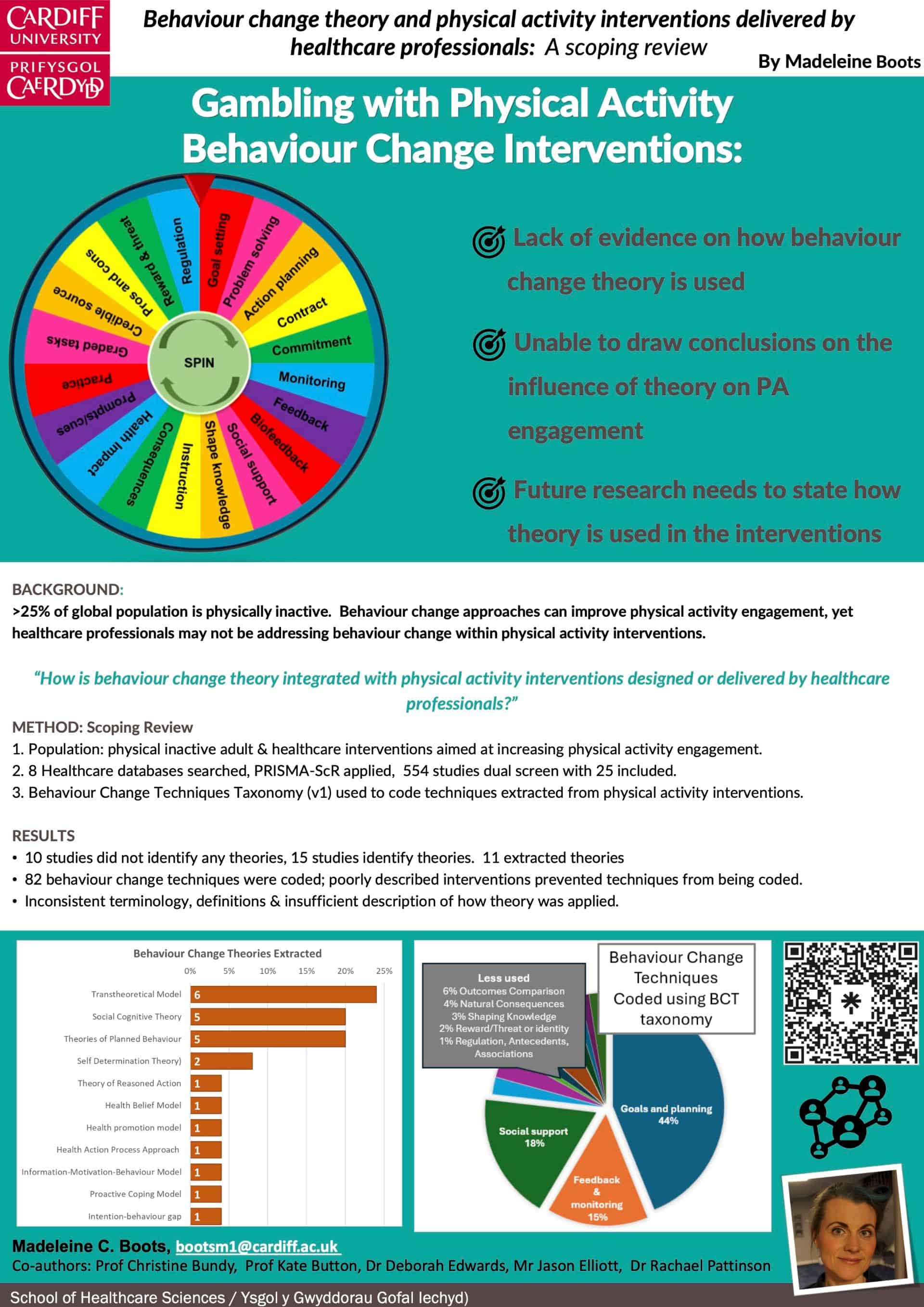
Behaviour change theory integration with physical activity interventions delivered by healthcare professionals: A scoping review.
Abstract Overview
Background:
Over one quarter of the global population is physically inactive. Despite healthcare professional promotion physical activity (PA) guidance, questions remain. These include how behaviour change (BC) is incorporated into their use and what the most effective components of PA interventions are?
Purpose:
To conduct a scoping review to map how theory frames delivery of BC interventions and techniques; exploring how theory, models or frameworks govern PA BC intervention design and implementation.
Methods:
JBI scoping review methodology was applied and protocol registered with the Open Science Framework (June 2022). Searches were conducted in July 2022. Eligible literature focused on healthcare professional PA BC interventions for inactive adults. The Behaviour Change Technique Taxonomy (v1) (BCTT) was used for defining intervention techniques and the Behaviour Change Wheel for a narrative analysis framework.
Results:
Twenty five studies were included. Interventions included in-person (n=17), in-person plus telephone (n=2), either (n=1) or telephone only (n=1). Web-based advice was used (n=2) or combined with human support (n=2). Single brief interventions were offered (n=12) or with follow ups (n=13). Isolated educational approaches (n=1) or prescriptive advice (n=1) were rare. Counselling (n=6), acceptance and commitment therapy (n=1), facilitation or supervision (n=3) motivational interviewing approaches (n=7) and coaching (n=1) were used, with five providing no details. Eleven theories were extracted: the most frequently cited being the Transtheoretical Model (n=8), Social Cognitive Theory (n=6) and Theories of Planned Behaviour ( n=5). Twenty-five, BC technique definitions were identified using the BCTT, spanning 12 categories. Goal and Planning was the most frequently utilised.
Conclusions:
Mapping of evidence concluded broad variability in language, reporting and theoretical approaches. Categorising BC techniques was difficult due to lack of clarity in reporting. Transparency in theoretical underpinning is required to facilitate future research on PA BC technique effectiveness.
Funding:
Staff-funded PhD at Cardiff University.

Additional Authors
Name: Christine Bundy
Affiliation: Cardiff University
Presenting Author: no
Name: Kate Button
Affiliation: Cardiff University
Presenting Author: no
Name: Deborah Edwards
Affiliation: Cardiff University
Presenting Author: no
Name: Jason Elliot
Affiliation: Cardiff University
Presenting Author: no
Name: Rachel Pattinson
Affiliation: Cardiff University
Presenting Author: no

